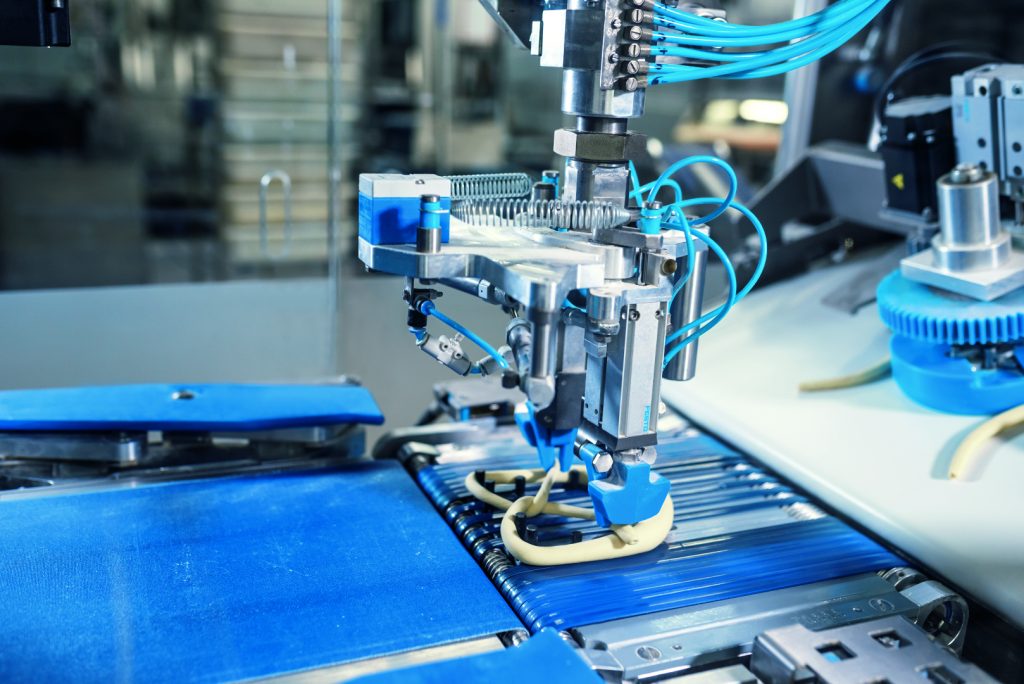
A Unique Twist for the Old Taste Buds
Germans love big salty, soft-breaded pretzels. In the south of Germany, a freshly baked pretzel with butter and the aroma of freshly brewed coffee is a must on any breakfast table. Achieving the perfect shape, a symmetrically twisted pretzel, usually involves a lot of painstaking manual labour.
September 1, 2020 | By Adam
 Photo credit: Festo.
Photo credit: Festo. 
Photo credit: Festo.
The Schill bakery in Denkendorf, near Stuttgart, opted to automate the process, including the trickiest of stages, the dough twisting, in turn boosting production over four-fold.
As automated dough-shaping goes, large German-style pretzels present an interesting challenge. Croissants, by comparisons, are just a simple roll-up of a triangular slice of dough, but large pretzels require dual gripper synchronization, and consistency is a must.
Before the pretzel enters the oven at Schill, the dough is first kneaded and portioned automatically into lengths of consistent thickness. Then, these strips are transported on a conveyor belt to the next stage: rolling out. Here, the classical shaping of the dough length begins: fattening the belly and thinning the ends for twisting. The dough exits this process in an U-shape.

Photo credit: Festo.
The U-shaped strand is aligned on the conveyor with a positioning unit employing Festo pneumatics, so the grippers can grasp the ends in exactly the right places. This is followed by the twisting process, a dual grip-and-twist motion performed by actuators including DFM guided drives.
Guided drives and guided slides provide stability and resistance against torquing and twisting that simple ISO cylinders do not, ensuring consistency and accuracy in a wide range of applications.
Thanks to the sensitive end-of-arm tooling, the dough strand is gently picked up at the ends. In less than a second, the strand becomes a precisely twisted pretzel.
Automated production turns out 2,300 pretzels per hour; a crew could twist 500 to 600 in that time by hand. It used to take hours of boring work for the staff to make the equivalent daily output.

Photo credit: Festo.
“The advantage is that the employee can use the time gained to use their expertise for other tasks in the bakery, we have lots of delicate and individual tasks for which we can use any free pair of hands,” said Martin Schill, Owner and Master Baker Schill says the pneumatic systems have performed consistently well despite high levels of flour dust, thanks to seals that protect the drives from dry particle ingress.
The twisting apparatus also can be rapidly adapted to forming other shapes, like braiding twisted buns. For this purpose, a different gripper set is substituted, specifically adapted for that end product.
If an error should occur during retooling, sensor technology on the machine detects incoming dough and stops the process automatically.
____________
Article submitted by Festo Trends in Automation.
Advertisement
Stories continue below
